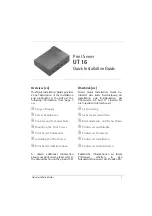
Chapter 4. Continuous availability and manageability
183
4.3.4 Notifying
After a Power Systems server detects, diagnoses, and reports an error to an appropriate
aggregation point, it then takes steps to notify the client, and if necessary the IBM support
organization. Depending on the assessed severity of the error and support agreement, this
client notification might range from a simple notification to having field service personnel
automatically dispatched to the client site with the correct replacement part.
Client Notify
When an event is important enough to report, but does not indicate the need for a repair
action or the need to call home to IBM service and support, it is classified as
Client Notify
.
Clients are notified because these events might be of interest to an administrator. The event
might be a symptom of an expected systemic change, such as a network reconfiguration or
failover testing of redundant power or cooling systems. These events include the following
examples:
Network events such as the loss of contact over a local area network (LAN)
Environmental events such as ambient temperature warnings
Events that need further examination by the client (although these events do not
necessarily require a part replacement or repair action)
Client Notify events are serviceable events, by definition, because they indicate that
something has happened that requires client awareness in the event that the client
wants to take further action. These events can always be reported back to IBM at the
client’s discretion.
Call home
A correctly configured POWER processor-based system can initiate an automatic or manual
call from a client location to the IBM service and support organization with error data, server
status, or other service-related information. The call-home feature invokes the service
organization in order for the appropriate service action to begin, automatically opening a
problem report and, in certain cases, also dispatching field support. This automated reporting
provides faster and potentially more accurate transmittal of error information. Although
configuring call-home is optional, clients are strongly encouraged to configure this feature to
obtain the full value of IBM service enhancements.
Vital product data (VPD) and inventory management
Power Systems store vital product data (VPD) internally, which keeps a record of how much
memory is installed, how many processors are installed, the manufacturing level of the parts,
and so on. These records provide valuable information that can be used by remote support
and service representatives, enabling the representatives to provide assistance in keeping
the firmware and software current on the server.
IBM problem management database
At the IBM support center, historical problem data is entered into the IBM Service and
Support Problem Management database. All of the information that is related to the error,
along with any service actions taken by the service representative, is recorded for problem
management by the support and development organizations. The problem is then tracked
and monitored until the system fault is repaired.
Содержание Power 780
Страница 2: ......
Страница 14: ...xii IBM Power 770 and 780 9117 MMD 9179 MHD Technical Overview and Introduction...
Страница 134: ...120 IBM Power 770 and 780 9117 MMD 9179 MHD Technical Overview and Introduction...
Страница 172: ...158 IBM Power 770 and 780 9117 MMD 9179 MHD Technical Overview and Introduction...
Страница 218: ...204 IBM Power 770 and 780 9117 MMD 9179 MHD Technical Overview and Introduction...
Страница 219: ......
















































